Procurement DefinitionProcurement refers to the process of acquiring goods and commerce services of works from any external source. This can involve sourcing, purchasing, and negotiating contracts with suppliers, also known as vendors. Procurement is a critical function in which an organization is involved. It uses managing cost, risk, and quality files, ensuring that the organization has the necessary resources to achieve its goal. 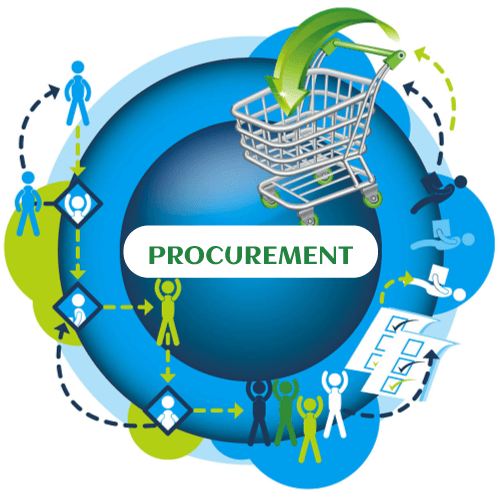
In this article, we will explore the different aspects of procurement, including importance, key concepts, strategies, and steps followed for a successful procurement. Importance of ProcurementProcurement is the critical process that leads to the success of any organization. The sole reason behind this is the help procurement provides through the right resources available at the right time and cost. Procurement is known for playing a vital role in cost management as it involves negotiating contracts, selecting suppliers, and managing supplier relationship that helps minimize the cost while ensuring the excellent quality of the product. Effective procurement also helps mitigate risks. It involves identifying and managing the risks linked to sourcing, supply chain, and quality. It is also an essential factor that ensures compilers with regulations and standards, as it involves monitoring suppliers to ensure they meet legal and ethical standards on a regular basis. 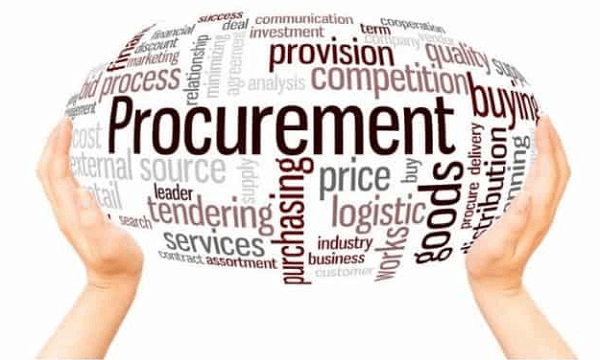
Key Concepts in ProcurementSeveral key concepts are central through procurement and lead to a successful quality product. These steps include: 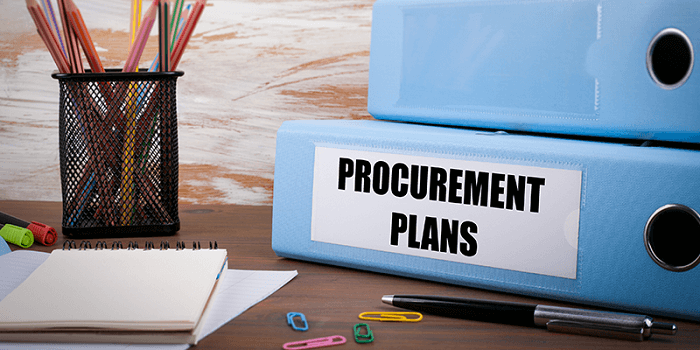
1. SourcingSourcing basically refers to the process of identifying potential vendors or suppliers. In this process, the company evaluates its ability to meet the organization's requirements. The sourcing process follows: conducting market research, issuing a request for proposals, also known as RFP, and evaluating bids. Creating a list of suppliers is also a vital step followed in procurement as this step involves searching and comparing different suppliers. Under all these suppliers, the company filters out the best supplier that offers the best value for money invested by the company. It is essential to consider the factors like accountability, production capacities, and ethics that the supplier follows. By choosing the right supplier, the business owner ensures they will receive high-quality products at a reasonable price. 2. ContractingContracting basically involves negotiating and managing contracts with suppliers or vendors. Contracting involves signing papers in which the two parties decide on terms and conditions; setting a performance matrix and monitoring compliance are vital factors covered under this step. Negotiating on contract terms with the finalized supplier is one of the most important processes that is involved in the flow full process of procurement. Under this process, the company and the second party, that is the supplier, negotiate on the price that is fair for both the parties. 3. Supplier Relationship Management (SRM)SRM basically refers to the process of managing relationships with the vendor to ensure that they meet the requirement placed by the organization. This basically involves developing collaborative relationships, setting performance expectations, and monitoring the supplier's performance. 4. Risk ManagementRisk management basically involves identifying, accessing, and managing risks that are linked with procurement. These risks usually are associated with sourcing, supply chain, quality, and compliance. Risk management also defines how the two parties can settle any risk that comes while building a quality product. 
5. Procurements StrategyProcurement strategy involves developing a plan that helps acquire goods and services and aligns the work with the organization's goals and objectives they want to achieve in the future. It also involves setting priorities and identifying risk and opportunity, and it also helps develop a sourcing and contracting plan to avoid unnecessary circumstances. Types of Procurement StrategiesTo know about different procurement strategies, we first need to identify what are procurement strategies? Procurement is basically the process that helps obtain items at the best possible price while maintaining quality and delivery time standards. Various types of recruitment strategies can be used to help get a quality product while maintaining your budget. It is essential for any business owner to know about different procurement strategies as it can help them choose the right one for their business. 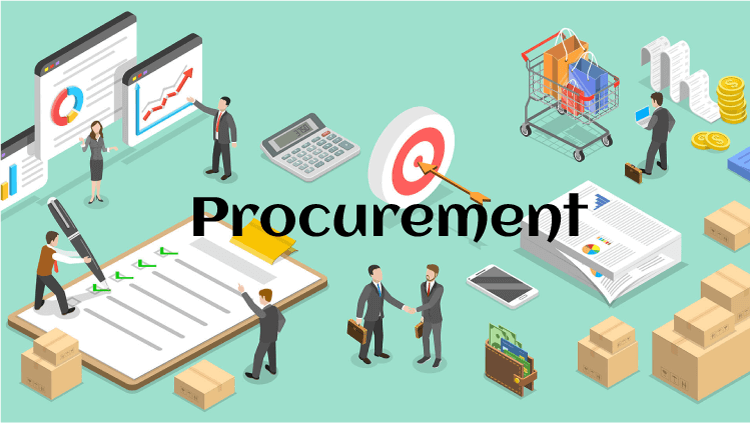
Procurement strategies are indeed the plans and methods that an organization basically uses to procure goods and services. These vital strategies help the organization get the best value for its money while maintaining the quality of the product. Or the business companies encompass the methods and approaches they can use to find the supplier negotiate with them on the price, and ultimately make the final purchase that will help their business grow. It is vital to have a strategy as it will help you save time and money and will also ensure that you get the best possible product at a reasonable price with good quality. There are various sort of procurement strategies that can be used by businesses to choose the right product. Choosing the right procurement strategy depends on various factors like- the types of goods or services the organization needs, the size of the business, and the most critical factor is the budget. Some of the most common strategies for procurement are the ones discussed below: 
1. Cost ReductionCost reduction is one of the most common strategies that is used by businesses to save money. Here is how the cost reduction strategy works: in the process of cost reduction, the first party negotiates with the supplier, and looks for cheaper alternatives, and streams the purchasing process. This strategy is most effective when one understands the current cost and identifies areas where they can save or can cut the cost of their money. This process is also known as the cost-cutting process. 2. Green PurchasingGreen purchasing is a strategy where the first party focuses on buying goods and services with minimal environmental effects. In this strategy, the business tries to purchase products made from recycled materials, low emissions, or energy-efficient products. Green purchasing is a good option for businesses that don't want to impact the environment and operate more sustainability. 3. Risk ManagementThis management strategy concentrates on looking at the factors that mitigate risk associated with purchasing goods or certain types of services. In risk management, the first party identifies and accesses the various risks, develops different plans, and establishes risk-sharing arrangements with the supplier. Risk management is one of the most essential strategies for businesses that want to protect themselves from potential problems while purchasing any sort of thing that will help their business grow full 4. Total Quality ManagementTotal quality management is a strategy that helps the first party ensure that all the products and services have the highest quality and ensures the highest policy and will meet high standards. In this strategy, the first party goes through the following process: the first process is the quality standard, second is conducting inspections, and the 3rd process is implementing quality control measures. This strategy is most vital for businesses that want to avoid any problems with their purchase, and this strategy also helps them ensure that the product they are going to purchase is made up of the highest possible value. 5. Supplier Management and OptimizationSupply and management and optimization strategy focus on developing relationships with the supplier and working to improve their performance in the future. The strategy includes supplier performance, conducting audits, and providing training and support to the second party. This strategy is a battle for businesses that want to improve the quality of their purchase and ensure that they are getting the best quality from their supplier. This strategy also helps deep business owners get into a good relationship with the supplier and build a specific trust. Why Is Procurement Critical in Business?
Every business requires certain materials, goods and services to achieve its future goals. Whether it be software for communication or raw materials to make any product or services to maintain their reputation keeping the organization running is one of the most expensive and time-consuming tasks, which also has the business reach heights. The main aim of the procurement department Is to acquire the goods that the business needs to grow that to at the best price and terms. The professionals working in the procurement field exhale at building supplier relationships, negotiating advantages terms, and streamlining the procurement process by identifying a need for services or good two invoice certain payments. With a proper flow of procurement process, an organization basically increases the cost savings, minimizes their waste material, and analyses how and where they can adjust in their budget that will not impact the production of the business. The money preserved through the flow complete procurement process initiates growth and isolates the downturns. How Does Procurement Work in A Business?The most vital factor that leads to the flow full procurement is a strong procurement management that has control over the organizations' financial health full story the second most vital factor that ensures a good procurement flow is the money that the organization is spending, so it is vital to keep an eye on expenditure that to add the ground level this level of spending of my station requires a cross-departmental effort that only and only focuses on the finance, legal, and supply chain management of stakeholders. The procurement department is responsible for running the administration. They also focus on the procurement process and the supplier life cycle, which is the most bottled factor in which businesses invest their money. Now let us discuss the different stages of the procurement process followed by the procurement professionals. The most general purchasing activities fall into the categories discussed below. PlanningIn this step, the company establishes budgets for departments and teams. This planning process occurs only in corporations with the finance team, and the department's stakeholders play a vital role in this process. In this step, the company uses competitive analysis and current strategic sourcing partnerships to learn about the best suppliers that will meet the company's requirements. This process is conducted in collaboration with department heads and also with the purchasing approvers. Acquisition or PaymentIn this process, the company follows ordering, re counselling, and paying for goods and services, and meeting organization needs while maintaining its spending control. They pay close attention to the price and the terms ensuring the acquisition of the best quality products that also add the competitive price under favorable terms. EvaluationIn this process, the company uses past performance and current data to learn about the supplier relationships they prepare for their future spending. It also looks at the available data to uncover further cost savings and improve the bottom line. Steps Followed in The Procurement ProcessAn intense procurement process plays a vital role that helps a business grow financially and provides stability to the business. A robust procurement process aids in paying the right price for goods and services. It helps minimize the delivery time and helps the business choose the best partner to work with that will help you grow your business. According to the study, there is no proper procurement process as the procurement process entirely depends upon the size and the type of business the first party owns. There is no particular one size fits all approach for the companies; it needs to be tailored entirely to ensure maximum efficiency by following the best procurement process that fulfills their needs. Next Even if you are looking to document a procurement process from scratch or you feel that your business needs to reach access its procurement process, here are the seven key steps that you should follow to achieve good heights in your business: Step One: Identify Goods or Services Needed to Grow Your Business Next TimeThe very first step that we follow in the successful procurement process is that the business should start the procurement when they realize that they need to obtain goods or services from any other company by keeping the goods that you need from the other company in mind you are very first step should be at looking at the whole business and recognize the need of every department that comes together to make your business successful full By following this process, you are presented with an outstanding level of visibility of all the pending that is taking place in the company, and you will also get an idea of where you will need to spend more to fulfill all your requirements. Therefore, you can outline the business areas that you can look at saving money, or you can also follow the cost-cutting process. Here is an example for you that will help you understand the first step in more detail; if you are owning an embroidery business, in the very first step, you will anise how many and what type of embroidery machine you would require. Secondly, you will also look at the more significant embroidery business expanding and what was their first step to follow to achieve this height. Overall, under step one, the buyer identifies the goods or services required by the company. This involves looking at the whole business and recognizing the needs of every department that contributes to the growth of the business. This step helps to provide visibility of all the pending tasks that are acting as a barrier to the company's growth, this steps also enables the company to outline the areas where they can save the money by following the procedure of cost cutting. Step 2: Consider A List of SuppliersThe second and the most vital step that every business should follow for a successful procurement process is creating a list of suppliers for finding the right supplier for your business is very important so it is not a decision that you have to take lightly. If by any chance you choose a long supplier, it could knock off all your business. So, when you are looking at your supplier you should have a proper knowledge about their business, how much do they concentrate on their business, and you should even have a look at their history of business. By this we state that while you are having or while you are creating the list of suppliers, you should keep in mind all the above-mentioned factors to avoid any circumstances and you can do this by comparing the competition against each other and over there you will see the different areas in which every business or second party Excel. Here is a list of ideal states that are used by top suppliers:
Here is an example for you that will help you understand the second step in a much better way for example and embroidery machine whether its first one or an upgrade one it requires quite an investment not only are they your most expensive cost but they are your most important equipment that will lead you to produce certain goods that will indeed help your business grow. You need one that is developed according to your customer demands, so you should compare an array of different options available at different suppliers Overall, we can say that under Step 2 the company creates a list of suppliers that they consider that help them grow their business. Finding the right supplier for the business is one of the most important task, and it is also vital to have a proper understanding of the business holed by the supplier, its production capacities, ethics and how much does the supplier prioritize its business relationships. This task can become successful only by comparing competitions against each other. Step Number 3: Negotiate Contract Terms with Selected SuppliersAfter you have made a decision on which supply you have to work with, you have to negotiate with the supplier on the basis of contract this stage is the most vital stage, as you want to agree on a price that is fair for both the first party and the second party and both of you should be happy with the amount decided. Contracts are the most important part of this step. Under contracts should not only cover the pricing, but you also cover the scope of the whole project which includes of terms and conditions, and timelines of delivery. All these factors are the most vital factors which help the business grow as under terms and conditions you will discuss with this supplier each and everything and under timelines of delivery you will also get to know at what time will you be getting the raw material to produce the final good, through this you will be able to commit the consumer. Note: you should always keep a copy of your contract so that you can refer to it wherever it is required.
Overall, we can say that Step 3 is basically to negotiate the certain contract terms with the finalized supplier. This taste involves agreeing on a prize that is acceptable to both the parties, this steps also covers the covering price, it also concentrates on scope of the project, and terms and conditions, and the most vital factor that is followed in this step is the timeline of delivery which is accepted by both the parties on a contract. Step 4: Finalize the Purchase OrderOnce you have submitted your contract to the supplier and both the parties are happy with the d link, it is now high time to finalize your purchase order for the purchase order is a certain document that outlines:
Once you have approved your purchase order it is now time that you have to sit with your finance team to realize the details of the supplier common not only this but you will also contact to your finance team to give a detailed description to the supplier. Through this, the finance team will have an access to all the key bits of information that they need to fulfill the companies' budget and to get a good in a certain price, and the finance team will also be able to provide the whole detail to the supplier. Example: Under the purchase order the finance team gets the following things:
With the help of purchase order document, you will be showcased under the further agreements that will take place between the 2 parties a contract agrees with the whole collaboration, purchase order 10 to contractually agree to individual jobs. It is important to know that the purchase order is sent via email to both the parties and to the other members of the business. Overall, we can say that under Step 4 the company finalizes the purchase order. The purchase order basically is a document that outlines description of goods and services also includes of total cost, quantity, and the approval of workflow under this step commit is important for the owner of the company to sit with the finance team to provide them all the details that are required to communicate with the supplier Step Number 5: Receive Invoice and Process PaymentVasanth your supplier has received your purchase order you will receive an invoice from the detailing that showcases the agreed price and instructions on how to pay to the supplier. On this invoice, you will find details of your order also, so you have to make sure that you keep a record of all the noises that you receive in the future as well. Depending on what all terms and conditions you have decided on the contract with the supplier, you will have a certain number of days to make the particular payment. Majority of the businesses offer 30 days credit notice a leeway to make the payment if you can't do it on the spot. However, it will completely depend on what you have agreed in terms with the supplier and the strength of the relationship that you both face. Note: It is always recommended to pay your invoice as soon as you receive them through this you will be able to save yourself from the potential problems in forgetting and maybe incurring extra cost of being late performer. Secondly, your supplier will also appreciate your efforts to pay the payment on time this will make your relationship good and the supplier will also be able to build a trust.It Is very important to have a good relationship with the supplier as it will massively benefit both the parties in the future. From time to time, they may include extra material at little price or no cost due to your loyalty. Overall, we can say that in Step 5, the company manages the delivery of goods and services. Under this stage the tracking of delivery of goods and services are the most vital factor that is taken care of by the company and it also ensures that they are delivered on time and in the right quantity and quality as committed on the contract. Conclusion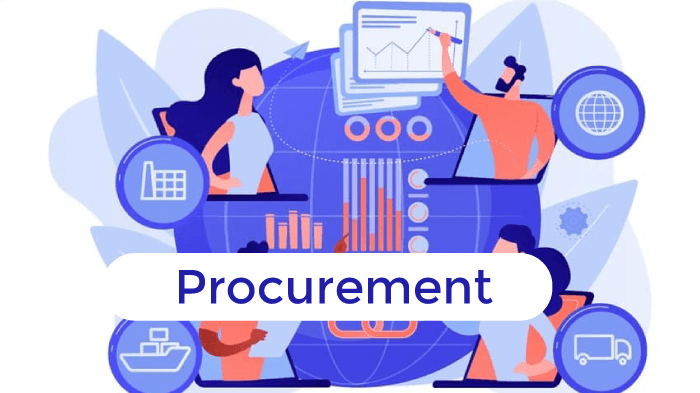
Procurement plays a critical role in the success of any business any size. It can be said that procurement is a strategic process that involves sourcing common negotiating, and purchasing goods and services from the supplier that company finds out by following different procedures. This supplier that they select, is the best they think that they can help their company grow strong procurement process helps the businesses to minimize the cost, it also helps them improve efficiency, and enhance their profits. A strong procurement process is essential for any business to grow as it involves several steps like identifying the goods or the services that are required by the company procurements help the company create a list of suppliers it also helps the company negotiate on a contract with the supplier and finalize their purchase order. By following all these important steps, the businesses are able to improve their efficiency by minimizing their cost of following the cost cutting methods. Therefore, it is incidental for each and every company to establish a flow full procurement process that is focusing on specific needs that the owner of the company thinks will help their company grow and remain competitive in the market.
Next TopicRibosomes Definition
|
 For Videos Join Our Youtube Channel: Join Now
For Videos Join Our Youtube Channel: Join Now
Feedback
- Send your Feedback to [email protected]
Help Others, Please Share










